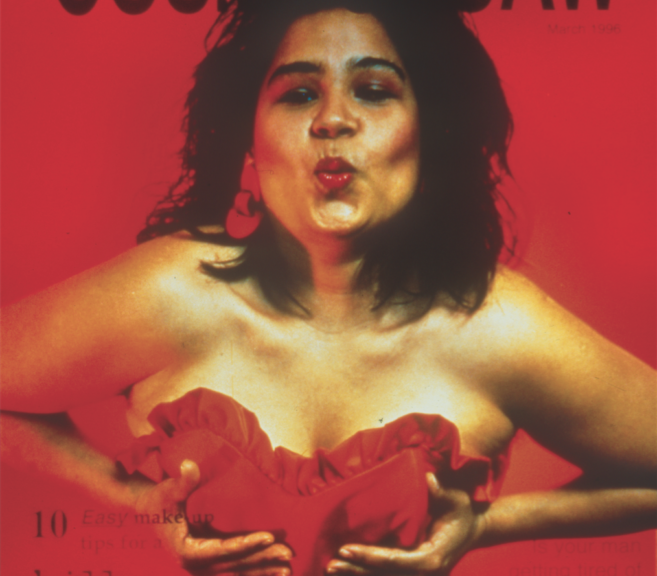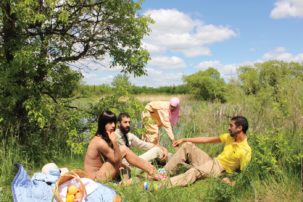When curator Sally Frater was beginning to organize her latest exhibition—now up at Centre[3] in Hamilton—the main thing on her mind wasn’t formalist painting trends or trendy art-theory dispatches.
Rather, in assembling the exhibition, Frater was thinking about the statement that a 23-year-old woman, the victim of Stanford rapist Brock Turner, had submitted to a California court.
“I found her statement to be very moving,” Frater says. “It was a very beautifully written statement that I think very impactfully conveyed the aftermath of sexual assault.”
The way that letter conveyed the pervasiveness and persistence of rape culture also stayed with Frater in developing the show, which ended up being titled “20 Minutes of Action”—a phrase Turner’s father used to downplay that rape.
“[Rape culture] is often an ongoing condition that needs to be negotiated by survivors,” Frater says. “So I was thinking about the pervasiveness of it and all the ways we are immune to it in contemporary society—which I guess speaks to its ubiquity.”
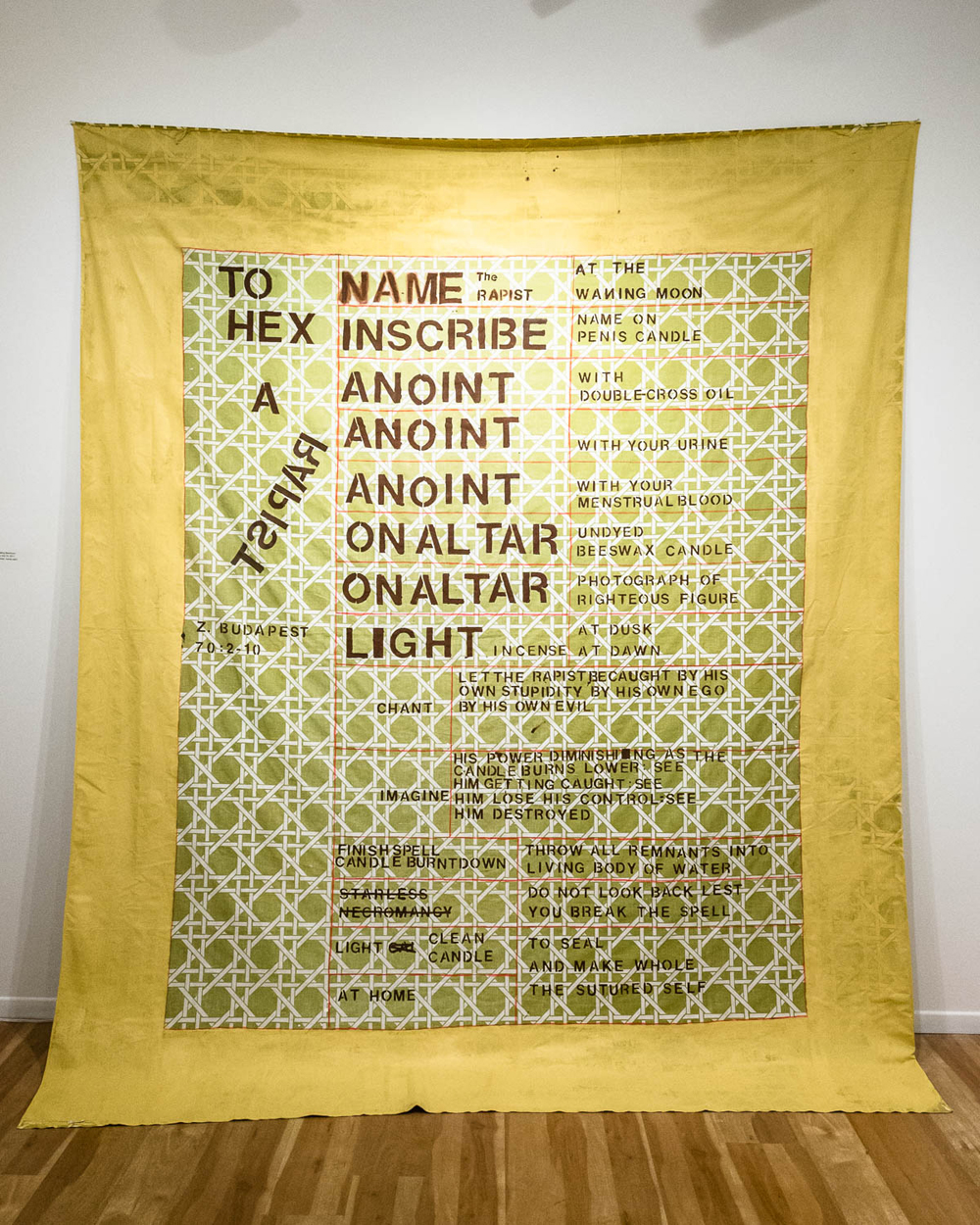 Mary Walling Blackburn, tsipaR a Xeh Ot, 2017. Cotton sheet, housepaint. Photo: Andrew Butkevicius.
Mary Walling Blackburn, tsipaR a Xeh Ot, 2017. Cotton sheet, housepaint. Photo: Andrew Butkevicius.
Under the auspices of Centre[3]’s Art [4] Change program, Frater brought these ruminations and related questions to nine artists from Canada and the United States: Lesley Loksi Chan, Nathaniel Donnett, Francisco-Fernando Granados, Roya Akbari, Insoon Ha, Shelley Niro, Hitko Okada, Rodrigo Valenzuela and Mary Walling Blackburn.
The resulting artworks now on view at the gallery, Frater says, identify “the different ways in which it [rape culture] takes shape.”
For instance, Shelley Niro’s The Shirt speaks to how “rape is embedded within different campaigns of colonization and imperialism,” Frater says.
Insoon Ha’s art, which includes plaster sculpture and colour photography, is informed by the history of comfort women, and speaks to a theme of how labour intersects with rape culture.
Mary Walling Blackburn contributes a large textile piece printed with a text on “how to hex a rapist.”
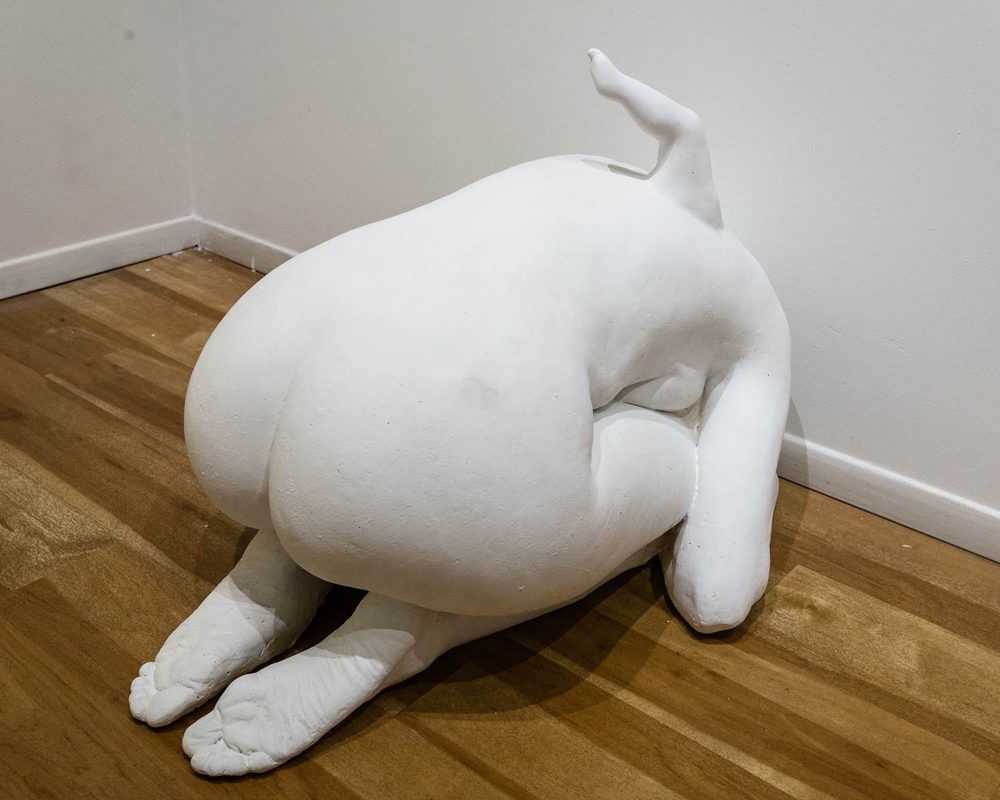 Insoon Ha, After It, 2005. Plaster. Photo: Andrew Butkevicius.
Insoon Ha, After It, 2005. Plaster. Photo: Andrew Butkevicius.
The white cube and art institutions are also implicated in rape culture and its supports—a theme that is taken up by artist Francisco-Fernando Granados and Roya Akbari in their collaborative two-channel sound piece Two Essays in Search of an Art Against Rape Culture.
The latter piece grew out of three years of conversations between Akbari and Granados around “the suffering of victims and family members of victims of rape and also what the barriers are to bringing justice to the victims,” says Akbari in an email.
“In my [sound] essay… I am particularly talking about how artists address the issue of rape in their artworks by looking at Greek and Roman mythology and paintings by Caravaggio that whitewash the violence of rape,” says Akbari. She also includes consideration of “the work of Ana Mendieta that represents violence directly.”
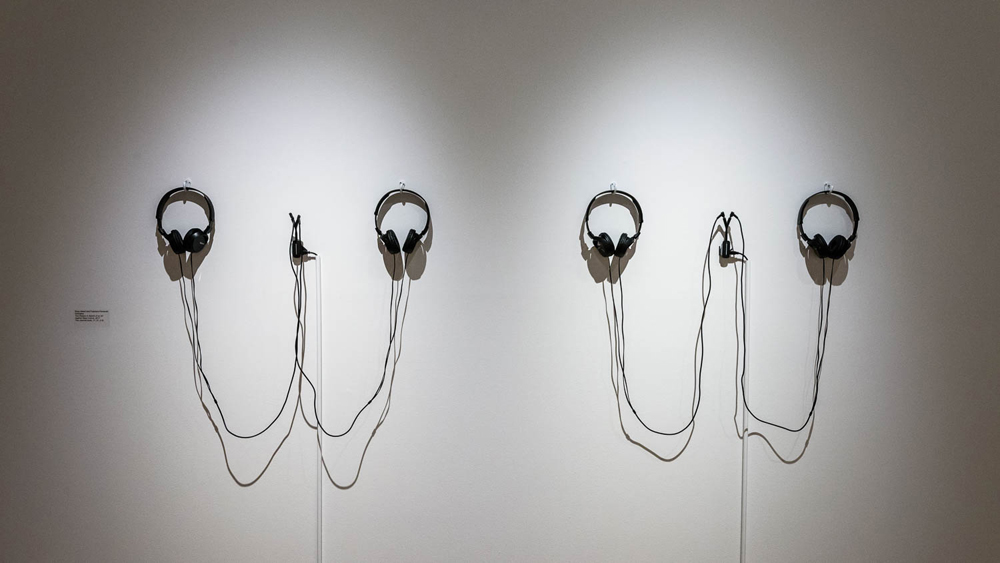 Francisco-Fernando Granados and Roya Akbari, Two Essays in Search of an Art Against Rape Culture, 2017. Two-channel audio. 21 minutes and 27 seconds and 5 minutes and 32 seconds. Photo: Andrew Butkevicius.
Francisco-Fernando Granados and Roya Akbari, Two Essays in Search of an Art Against Rape Culture, 2017. Two-channel audio. 21 minutes and 27 seconds and 5 minutes and 32 seconds. Photo: Andrew Butkevicius.
The form of Two Essays—as non-visual—was also an important choice, say the artists.
“By reading the essays for the audience but removing our bodies from presence and view, we want to create parallel meditations on the possibility and necessity of an art against rape culture,” says Granados in an email. “We talk about a range of historical and contemporary works, as well as feminist and queer theory, in order to question our discipline’s complicity with but also resistance to sexual violence.”
Collaboration was also a significant choice in a context of talking about rape culture and resistance to it.
“It was important for us to make something collaborative, and something that staged a conversation, in part because it feels like in order to create lasting social change around the issue of sexual violence, there needs to be a shift in our culture,” Granados says. “It certainly feels like rape culture is being unmasked in terms of the visibility of increasing conversations around it.”
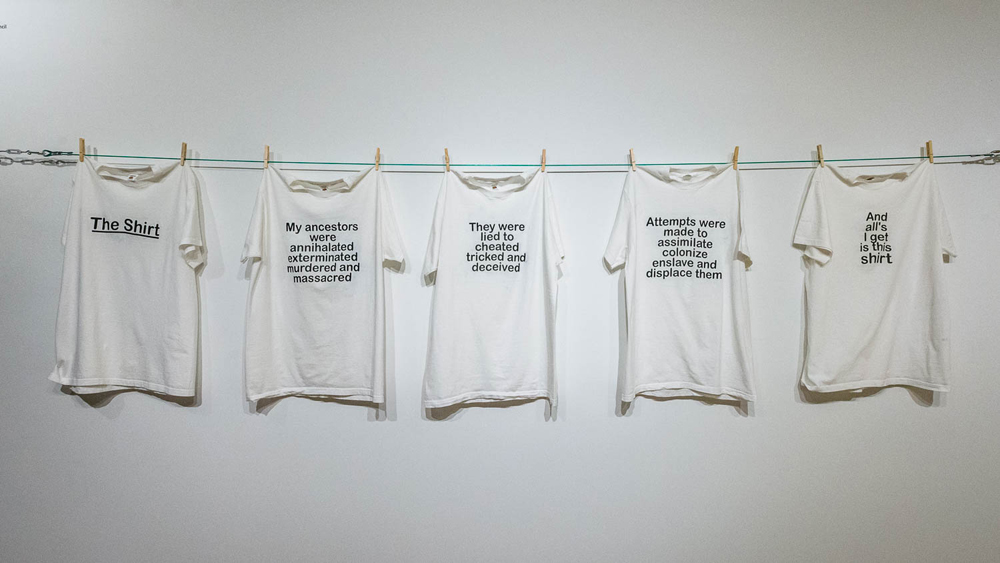 Shelley Niro, The Shirt, 2003. T-shirts and video. Photo: Andrew Butkevicius.
Shelley Niro, The Shirt, 2003. T-shirts and video. Photo: Andrew Butkevicius.
Taking the theme of conversation and collaboration further is a related Art [4] Change conference happening November 23 and 24 at McMaster University and Spice Factory. Speakers include Erin Crickett of Sexual Assault Centre – Hamilton Area (SACHA) and Farrah Khan of Ryerson University, among others.
“We really believe in a diversity of tactics—that there is no one path to reducing sexual violence in Canada,” says SACHA’s Erin Crickett, who delivers workshops about sexual assault to more than 5,000 Ontarians every year, and sees art as an important pathway in this outreach.
Crickett has been, as possible, using art to engage Canadians on the topic of sexual violence. In 2016, SACHA hosted the Sexual Assault: The Roadshow art project organized by Jane Doe. The organization also runs a feminist zine fair that includes the making of a collaborative publication on issues like consent. And this fall, SACHA wrapped a Hamilton Reads project on Zoe Whittall’s The Best Kind of People, including zine workshops with the public on sexual assault and its cultural implications.
“Because we have limited resources in our sector, we often miss out on using art as a tool,” says Crickett. “That’s why this [upcoming] conference is so incredible.”
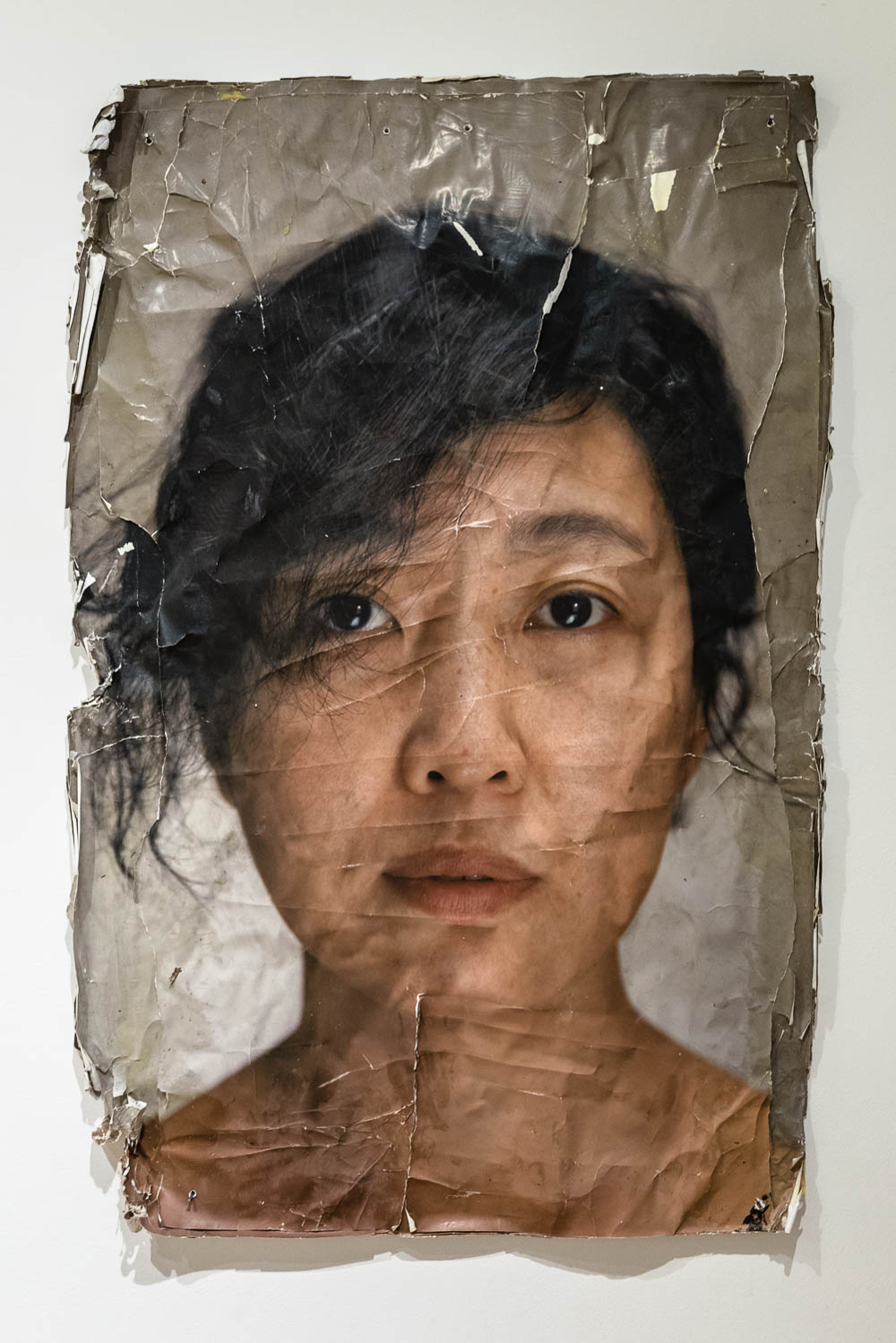 Insoon Ha, Self-Portrait, 2015. Collage. Photo: Andrew Butkevicius.
Insoon Ha, Self-Portrait, 2015. Collage. Photo: Andrew Butkevicius.
Both the exhibition and the conference have been supported by funding from the Canada Council and from the Ontario Ministry of the Status of Women’s Creative Engagement Fund, and they result from a partnership between Centre[3], SACHA and McMaster University.
And Frater is already planning another related exhibition for 2018.
“I am very interested in works that collapse the distance between the space of the gallery and the space of everyday life,” Frater says, noting there is more material to be explored here.
“It is one thing for us to be critiquing the way sexual violence manifests in everyday life,” Frater says, but we also need to “look at it in the disciplines of art and art history.”
The exhibition “20 Minutes of Action” continues at Centre[3] in Hamilton until December 2. The related conference on Unmasking Rape Culture takes place November 23 and 24 at Hamilton’s McMaster University and Spice Factory.
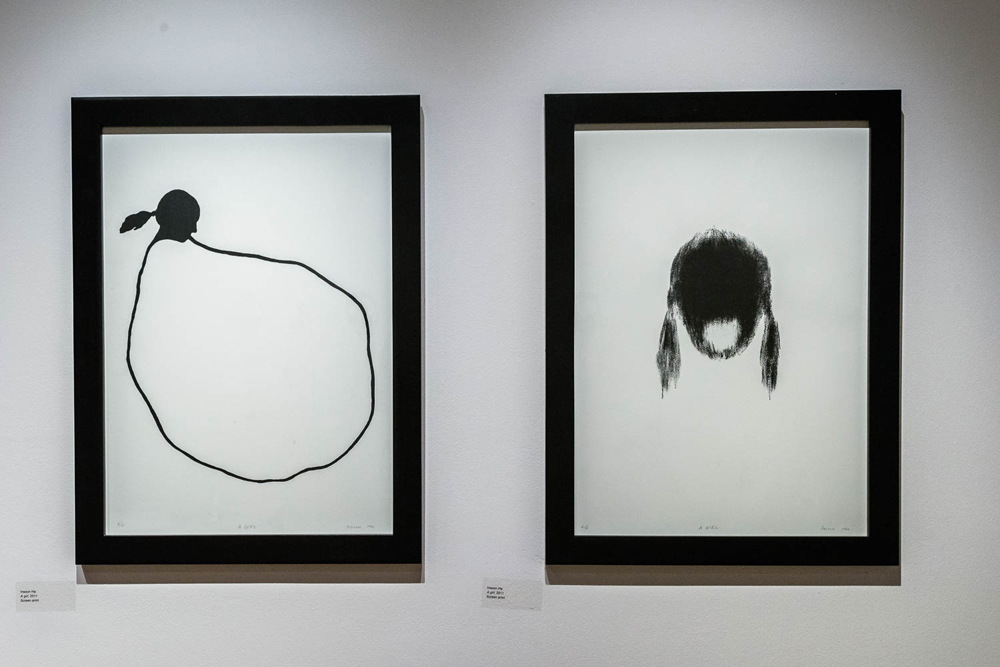 Insoon Ha, Girl, 2011. Screenprint. Photo: Andrew Butkevicius.
Insoon Ha, Girl, 2011. Screenprint. Photo: Andrew Butkevicius.

![An installation view of "20 Minutes of Action" at Centre[3] in Hamilton. Photo: Andrew Butkevicius.](https://canadianart.ca/wp-content/uploads/2017/11/ab_art4change-2.jpg)
